Begonias in appearance resemble the Royal Rose Flower, a little Camellia, Peony, Carnation and Even Narcissus. Tubean Begonia Recently in the spotlight - they are loved for the wealth of paints and a thin fragrance.
With proper care, the plant will delight with its beautiful blossom from the beginning of the summer and before the beginning of the autumn. On balconies grown in vases, blooming Begonia is even longer - bloom begins at the end of May and continues until the end of autumn. With proper care at home, it is not difficult to grow a tube begonia, since the plant is unpretentious.
Begonia tough blossoming. Description
This kind of beautiful-flowing plant is derived by breeders. Up to 9 species were used in crossbathing, Bolivian Begonia was the main one. The first hybrid varieties appeared in a free sale at the end of the 18th century in England, they were intended for cultivation in greenhouses, similar to the cultivation of tulips. But a little later, the breeder from Belgium decided to try to grow this kind of plant in the open soil. Louis Wang Hutti managed to do and ensure that the begonia could be raised just like a tulip bulb.
Every year the selection was paid to more and more attention, new, interesting varieties began to appear. So, he received a worthy assessment of Begonia Terry, as well as varieties that differ in characteristic coloring. Currently, flowerflowers have the opportunity to choose a planting material for garden decoration and balconies. So, there are unique types of gigantic sizes - up to 1 m! There are beanies with large colors, in diameter up to 10 cm, richly flowering (up to 12 cm in diameter) and multilateral, up to 7 cm in diameter.
Begonia is a homemade home - a grassy plant, it has a thick rhizome, translucent juicy stems, reaches in growth up to 20 cm, but depending on the variety there are also tall plants, up to 80 cm in growth. The leaves are not always located symmetrically, the flowers can be of different shapes and painting, depending on the plant variety. Petals can be both simple and terry, as well as semi-world different colors: from white to dark bardova. There are yellow begonias, orange, blue, but never - blue. Flowers on one plant can be female and male.
With proper care and proper pollination, very, very small seeds are formed. In 1 g of the planting material there are about 120 thousand seeds!
Blossom abundant - from the end of spring and to the end of autumn.
Begonia tube. Photo:
Begonia tube. Sorta
The breeders managed to bring a lot of different varieties, they can all differ in the form of leaves, sizes of colors and their coloring.
Top varieties:
- Sort "Picotics Harlequin" - a plant semi-liberal, low, he has large terry flowers, bright yellow with a bright red edge. Leaves gear, bright coloring.
- The "rose bud" is a compact bush, terry flowers, a gentle pink or light cream shade, resemble roses flowers, size up to 18 cm. Leaves are large, on the edge of wavy, dark green.
- Grade "Duck Ed" - a bush a short, semi-spreading stems, green leaves, glossy, finely toothed. Flowers dark coloring, dressing, not large, outwardly similar to peonies.
- Grade "Crisp marginata" - spreading shrub, green leaves rimmed with dark, almost purple color, plant height up to 15 cm, the flowers are white, pale yellow, with a wavy edge on the edges.
Planting and propagation of tuberous begonias
methods of reproduction are no different from growing other plants. Begonia propagated by all means:
- seeds;
- by dividing the tubers;
- cuttings: leaf and stem.
The most interesting thing to grow tuberous begonia from seed, though it is hard work, but very interesting. Seeds are barely noticeable, very, very small. Fruit - a boll small size (1-2 cm) in a single unit, there are up to a thousand seeds. The seeds stored in paper bags in boxes directly. Immediately after the ripening pods, they are ready for planting.
Growing from seed tuberous begonias in the home:
- into the prepared mixture of turf and sod land sown seeds;
- sowing time - the end of December;
- seeds sown thin layer on top pritrushivayut ground layer up to 2 mm;
- moistened soil - moderate watering;
- sow the seeds need to cover with foil, place in a warm and well-lit place;
- when the seedlings appear, the film can be removed, and before this period can not be watered and the soil to remove the film;
- first shoots waiting 2 weeks after planting, when the room temperature does not fall below 22 degrees;
- after the first rostochku, the room temperature must be lowered by 2-4 degrees. This is necessary to ensure that germs are not stretched and does not fall;
- seedlings begonias will thrive on the east window sill, as well as south and west, but without additional artificial light;
- when the seedlings grow stronger, will appear the first leaves, it is necessary to proceed to hardening - seedlings need to teach to the open air;
- swordplay - not an easy task, because the germs are still small, and the root system is too weak. But, despite this, the flowers are very durable, so the pick will transfer well if done correctly;
- it is important for the transplant to make the same substrate, remove the seedlings from the box and transplanted to a permanent place. Be sure the soil is necessary to moisten, wait until the moisture on the leaves dry out and only after that can be covered by film plants. Only very careful not to damage the delicate sprouts;
- the film can not be used, but then the soil dries very quickly, and this is unacceptable;
- the first dive transplantation is performed according to such rules: seeding seedlings at a distance of 2 cm, the second transplant - 4 cm, the third - 7 cm. As soon as they noticed that the adjacent leaves began to clog, it's time to transplant the grained seedlings;
- the third picking is the Senza immediately need to plant in pots or boxes, if you grow a begonia, the tube on the balcony and in an open ground in a half.
If seeds sowed in December, then blooms need to be expected in the middle of the summer or on the last summer month. Blossom lasts about 3-5 months. In the first year, the plants are very fragile, they need to be protected from direct sunlight. In the second year, the stem becomes thicker and pulls out, so it is necessarily necessary for a support.
When planting a begonia to the tube at home, expect abundant blossoms in the same year, about the 135th day after landing, and perhaps for the 150th day.
Strevy Begonia - reproduction with cuttings and tubers
How else can you propagate the tube begonia? There are 2 more ways to grow a tubegon: tubers and cuttings.
Cultivation of tubers:
- you need to take part of the tuber or one whole (on the main club they grow kids). Dock the main tuber is very careful not to damage. It is necessary to do this in a certain period, before the plant goes into rest stage. Try to remove the tuber from the soil or vase so that it goes out with a room of the earth, so it will be maximally protected. As soon as the period of rest will be approached by an end, prepared by the tuber, transfer to the open soil or in a large pot, entirely. If necessary, the branch of the children is allowed to sear them into another place;
- if there is no possibility as a landing material to use the main tuber, you can buy a new instance in the store. When buying, choose dense instances, up to 3 cm in diameter. They must be smooth and without damage. The landing material has the top and base, on the top there are small tubercles - growth points. The top is always flat, and the bottom on the contrary, convex (planting the bottom to the ground);
- planting the begonia of the tuber to the ground: Clean the tubers from dry roots, process. In order to disinfect tubers, you need to place their weak solution of manganese, withstand for half an hour. Soil Requirements: The soil should be nutritious and loose, acidity is neutral. An adult tuber is ideally put in a soil consisting of a deciduous land - 3-parts, sand - 1 parts and peat - 1 parts, to enrich the soil also add a rejected cow manure;
- when to plant: at the end of May or in early June, but not before. IMPORTANT when landing begonias to the tube in the garden, wait when the soil will warm well. When planting plants in a pot, they are planted at the end of February, early March.
Reproduction with cuttings:
- in late April-May, it is necessary to cut up the upper strong shoots, length from 6 to 10 cm;
- the location of the cut is closed with chopped wood coal so that the plant is not subjected to disease;
- cutted cuttings must be planted into moistened sand with the addition of peat, immediately cover with a can;
- after 2 or 3 weeks, the cuttings should be rooted.
This method of planting the begonia of the tube is considered the most difficult, since the cuttings are poorly rooted, and during an excess of moisture. The plant, multiplied in this way, requires more attention to wait for the beautiful flowering of the tubeball in the garden.
Begonia tube. Care
For details on how to plant a begonia of the tuber and how to care:
- make feeding preferably twice a month, with an equal interval;
- feeding: mineral complex or organizing;
- before the first frosts come, the autumn plants dig together with a large earthen room;
- store club without watering;
- storage - until April in a dark wet room (for example, in the cellar /
basement), temperature from +1 to +10 degrees; - when growing on the windowsill, bloom will last until early December, but from lack of light leaves gradually yellow. It is necessary to reduce watering half, move the tubers for storing in the refrigerator (peep peat). It is impossible to water because you can wake up the kidneys;
- some flower fans seek flowering during the winter during the introduction of nutrient mixtures and the organization of additional lighting. As soon as the stem is struggling, it must be broken from the base, replace the soil for fresh. Approximately after 14 days the first young sprouts will appear;
- cudley Begonias in winter poorly carry a sharp change of illumination, so it is useful to harden, periodically endure into the air when there are no frosts;
- incorrect care: When first, the begonia was grown on one window (Eastern or West), and then moved to the south. There may be burns on the leaves and on the contrary, the oppression of growth, if they moved to a cool and shaded place with insufficient lighting;
- growing on the windowsill: landing of tubers February-March, germination only in the light, the tuber is located in a pot so that it looks out for 2-3 mm. This is necessary in order for the base of the stem not attennered when the soil is oveurgery. When transplanting the tuber you need to deepen into the soil for 2 cm, because always the upper layer of the soil dries faster. Watering in the first weeks - rare, indoor temperature +18 degrees. In the hot period, the begonia is watered more often to prevent the soil drying.
Diseases of Begonia Togonyova
Begonia is an unpretentious, beautiful-flowing plant, with proper care pleases with abundant bloom, some crisp errors lead to certain problems:
- Since Begonia does not like the strong sun and overvoltage soil, with this when growing and there are many inexperienced beginner gardeners. If you put a pot in the sun, it may be destructive for begonia. Straight, scorching sun rays literally burning gentle leaves in front of her eyes. Therefore, it is impossible to plant a plant in open areas or put pots with begones on sunny windows. Due to lack of moisture, Begonia can even die. It is best to keep the plant in a half. If strong burns happened, the plant began to suffer from dehydration, it will not be able to save it. If there is no possibility to organize a suitable place, then with the help of gauze cut, you need to protect the flower from the excess sun.
- Mold often amazes this beautiful flower. It manifests itself as: gray spots appear on the leaves. To avoid it, you need to ventilate the room well and not allow the level of humidity in the room.
- Puffy dew may affect the stems and leaves. It is necessary to process damaged parts of the plant with special means, pay attention to the composition of the soil, prevent moisture stagnation.
- Water entering the leaves and moisture drops are enemies. When growing colors on the windowsill, the level of humidity should not exceed 60%, if the level is underestimated, it is also bad. We will have to resort to artificial moistening of the room - spray plants from the pulverizer. Such simple manipulation will help relive the hot summer period. Be careful because when moisture gets into the leaves, they can be covered with dark spots. To ensure a normal percentage of humidity and a favorable blossom environment, in hot dry weather, flowers in vases put in large containers filled with peat or moss. The filler must be periodically moisturized.
- Why does not blooming tongueball? It happens that the plant throws off the leaves and after them - non-scratched buds. Blossom stops - this is due to the lack of moisture. How to stop the process of resetting buds? Organize timely correct watering plants.
All diseases of this plant occur due to improper care. They can be avoided if you comply with all the rules for the cultivation and care of begonias and then these flowers will longer delight you with beautiful blossoms.

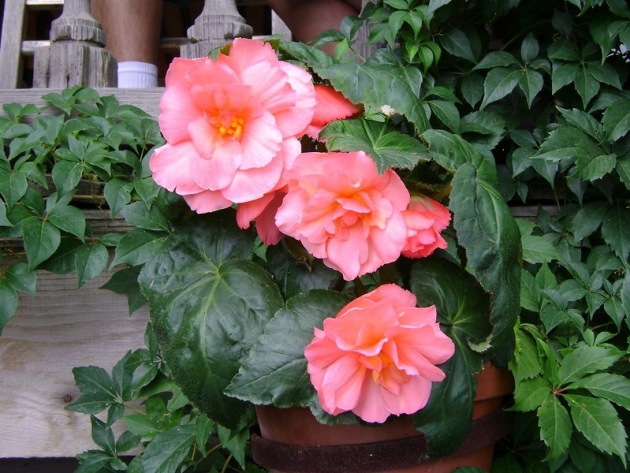
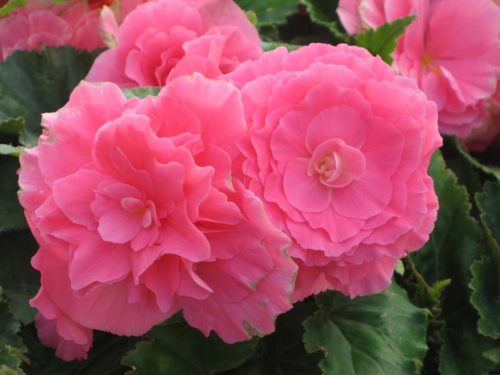
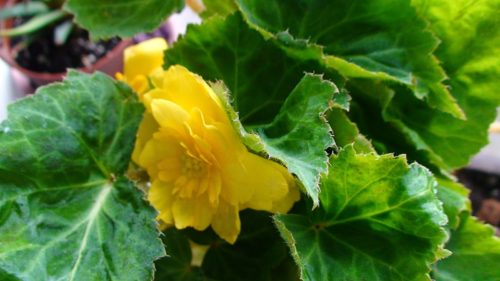

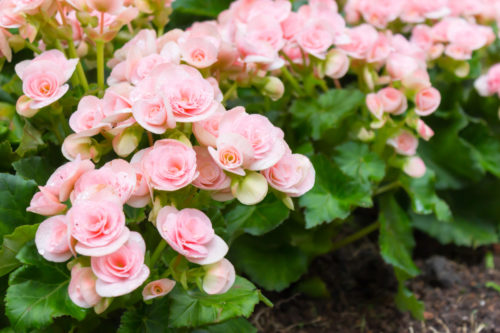
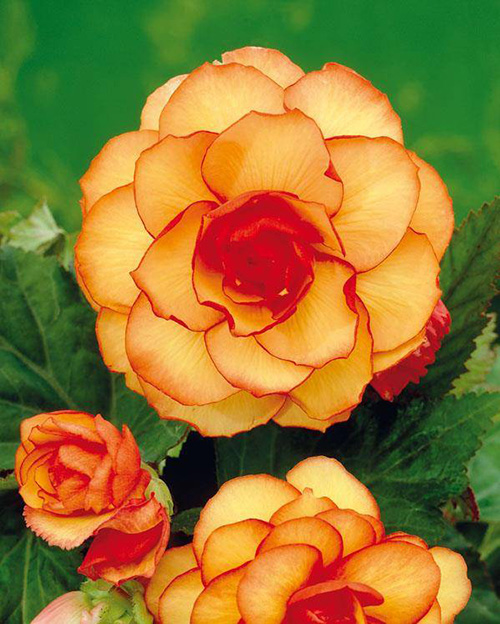


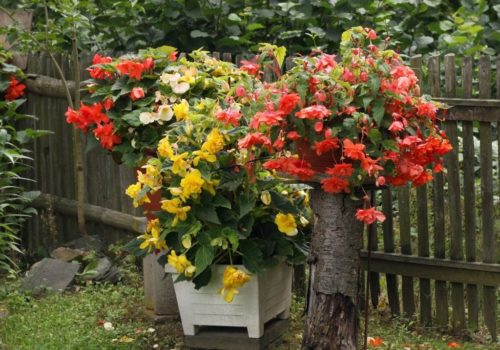

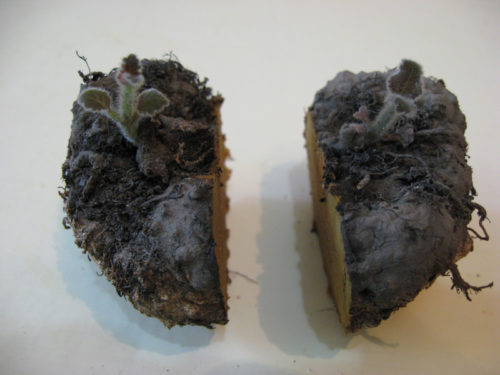

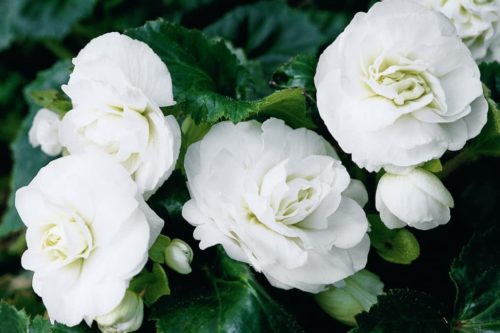













 Start a discussion ...
Start a discussion ...